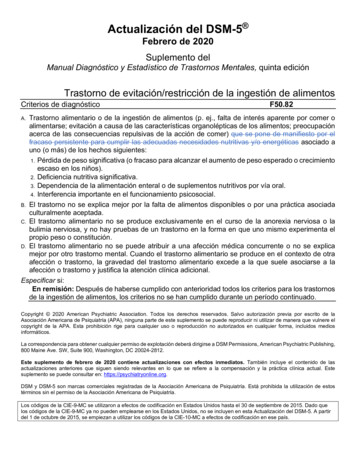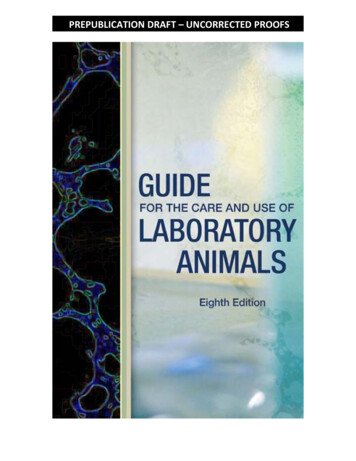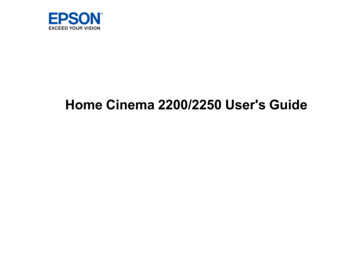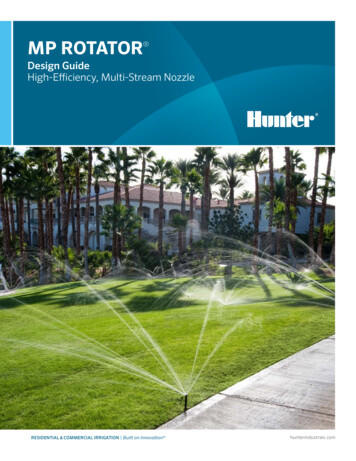
Transcription
N94.11 F50.81Guide tothe 2017Peggy S. Blue, MPH, CCS, CCS-P, CPC, CEMCD49.519 Q66.22 R39.192 Z92.84 Z33.3 I69.0ICD-10-CMUpdates
JustCoding’sGuide to the2017 ICD-10-CMUpdates
JustCoding’s Guide to the 2017 ICD-10-CM Updates is published by HCPro,a division of BLR.Copyright 2016 HCPro, a division of BLRAll rights reserved. Printed in the United States of America.5 4 3 2 1ISBN: 978-1-68308-145-6No part of this publication may be reproduced, in any form or by any means,without prior written consent of HCPro or the Copyright Clearance Center(978-750-8400). Please notify us immediately if you have received anunauthorized copy.HCPro provides information resources for the healthcare industry.HCPro is not affiliated in any way with The Joint Commission, which owns theJCAHO and Joint Commission trademarks.Peggy S. Blue, MPH, CCS, CCS-P, CPC, CEMC, AuthorSteven Andrews, EditorMelissa Osborn, Product DirectorErin Callahan, Vice President, Product Development & Content StrategyElizabeth Petersen, Executive Vice President, HealthcareMatt Sharpe, Production SupervisorVincent Skyers, Design Services DirectorVicki McMahan, Sr. Graphic DesignerSheryl Boutin, Layout/Graphic DesignReggie Cunningham, Cover DesignerAdvice given is general. Readers should consult professional counsel for specificlegal, ethical, or clinical questions.Arrangements can be made for quantity discounts. For more information, contact:HCPro100 Winners Circle, Suite 300Brentwood, TN 37027Telephone: 800-650-6787 or 781-639-1872Fax: 800-785-9212Email: customerservice@hcpro.comVisit HCPro online at www.hcpro.com and www.hcmarketplace.com
ContentsAbout the Author.vIntroduction . 1Coding Manual Updates. 3C49.A0–C49.A9, Gastrointestinal stromal tumors (GIST), CCs. 3D47.Z2, Castleman disease. 4D49.5-, Neoplasm of unspecified behavior of kidney. 5D78.3-, multiple other chapters, Hemorrhage/hematoma/seroma, CCs . 5E09–E11, E13, Proliferative diabetic retinopathy and diabeticmacular edema. 6E78.0-, Z83.42, Familial hypercholesterolemia. 7F32–F80, Psychiatric disorders. 7H34.8-, Retinal vascular occlusions. 8H35.-, Macular edema . 9H40.-, H53.-, Primary open-angle glaucoma and suspectamblyopia. 11H90.-, Conductive and sensorineural hearing loss . 11H93.A-, Pulsatile tinnitus. 11I60.2, Subarachnoid hemorrhage. 12G56.-, G57.-, I63.-, Cerebrovascular disease and mononeuropathy . 12I69.-, Cognitive sequelae of cerebrovascular diseases. 12I72.-, I77.7-, Aneurysm and dissection of precerebral and vertebralarteries, MCCs . 14J98.-, Mediastinitis, MCCs. 14 2016 HCProJustCoding’s Guide to the 2017 ICD-10-CM Updates iii
K04.-, K05.-, K06.3, K08.8-, Dental conditions, CCs(K04.01, K04.02). 15K52.-, Colitis. 15K55.0-, Vascular disorders of intestines, MCCs. 16K55.3-, Necrotizing enterocolitis, MCCs. 17K58.-, K59.-, Irritable bowel syndrome with constipation and chronicidiopathic constipation. 17K59.3-, Megacolon, CCs. 18K85.-, Acute pancreatitis, MCCs. 18K86.81, K86.89, Exocrine pancreatic insufficiency. 19L03.213, Periorbital (preseptal) cellulitis, CC . 20L98.7, Excessive and redundant skin and subcutaneous tissue . 20M04.-, Cryopyrin-associated periodic syndromes and otherautoinflammatory syndromes. 20M21.61-, M21.62-, Bunions and bunionettes . 21M26.60-, M26.61-, M26.62-, M26.63-, Temporomandibularjoint disorders. 22M50.-, Cervical disc disorders, CCs. 22M62.84, Sarcopenia. 23M84.-, Atypical femoral fracture . 23M97.-, Periprosthetic fractures, CCs for initial encounters. 24N13.0, Acquired ureteropelvic junction obstruction, CC. 25N39.491, N39.492, Incontinence . 25N42.3-, Atypical small acinar proliferation . 26N50.8-, Testicular/scrotal pain. 26N52.3-, Erectile dysfunction due to radiation therapy and ablativetherapies. 27N61.-, Inflammatory disorders of breast. 27N83.-, Ovarian cyst laterality, CCs. 28N90.6-, Childhood asymmetric labium majus enlargement . 28N93.1, Pre-pubertal vaginal bleeding . 29N94.1-, Dyspareunia . 29iv JustCoding’s Guide to the 2017 ICD-10-CM Updates 2016 HCPro
N99.-, Postprocedural urethral stricture and complications of stomaof urinary tract . 30O00.-, Ectopic pregnancy, CCs. 30O09.A-, Supervision of pregnancy with history of ectopic or molarpregnancy . 31O11.-, O12.-, O13.-, O14.-, O16.-, Pregnancy-related conditions(hypertension in pregnancy) . 31O24.4-, Z79.84, Diabetes mellitus controlled using oral medication . 32O33.7XX-, Maternal care for disproportion. 32O34.2-, Z98.89-, Uterine scar from previous surgery. 33O44.-, Placenta previa vs. low-lying placenta, CCs/MCCs. 33O70.2-, Third-degree laceration during delivery, CCs. 34P05.09, P05.19, Low birth weight . 34Q25.-, Congenital malformations of aorta, CCs. 35Q52.12-, Longitudinal vaginal septum. 36Q66.2-, Congenital metatarsus adductus . 37R29.7-, National Institutes of Health stroke scale. 37R31.21, R31.29, R39.82, Asymptomatic microscopic hematuriaand chronic bladder pain . 38R39.191, R39.192, R39.198, Difficulties with micturition . 38R40.24-, Time of assessment using the Glasgow coma scale . 39R73.03, Prediabetes. 39R82.7-, Bacteriuria . 40R93.4-, Abnormal radiologic finding of kidney . 40R97.2-, Z19.-, Malignant neoplasm of prostate . 41S02.-, S03.-, Oral and maxillofacial fractures and dislocation andsprain of joints and ligaments in the jaw, CCs, MCCs. 41S92.-, Sesamoid fractures, CCs for open fractures and complications ofnonunion and malunion. 42S99.-, Salter-Harris and other physeal fractures . 42T82.85-, In-stent restenosis of coronary and peripheral stent, CCs forthe initial encounter codes. 44 2016 HCProJustCoding’s Guide to the 2017 ICD-10-CM Updates v
T83.-, Complications of genitourinary prosthetic devices, implants, andgrafts, CCs for many of the initial encounters . 45T85.-, Complications of nervous system devices, CCs for many of theinitial encounters. 45T88.53X-, Z92.84, Unintended awareness under general anesthesia. 46W26.-, X50.-, Y93.85, External causes: Contact with stiff paper,contact with other sharp object, overexertion, and the choking game. 46Z05.-, Observation and evaluation of newborns for suspected conditionsruled out . 47Z30.-, Encounter and surveillance for implantable subdermalcontraceptives. 47Z31.7, Z33.3, Gestational carrier . 48Z53.3-, Minimally invasive surgical procedures converted to open . 49vi JustCoding’s Guide to the 2017 ICD-10-CM Updates 2016 HCPro
About the AuthorPeggy S. Blue, MPH, CCS, CCS-P, CPC, CEMC, is the lead instructor for the Medicare Boot Camp —Professional Services Version aswell as an instructor for the Certified Coder Boot Camp (live andonline) and the Evaluation and Management Boot Camp. She alsois an instructor for HCPro’s ICD-10-CM/PCS-related educationalcourses (live and online). Prior to joining HCPro, Blue oversaw thedevelopment, implementation, dissemination, and reporting of information related to Medicare professional services training efforts forHighmark Medicare Services. 2016 HCProJustCoding’s Guide to the 2017 ICD-10-CM Updates vii
IntroductionMore than 2,500 ICD-10-CM codes are being added, revised,or deleted for the 2017 update, effective October 1, 2016. Thechanges range from minor code revisions, such as the additionor removal of a dash between certain terms in a code title, tomore complex revisions, such as changes to laterality and/or sitespecificity.We have an unusually high number of changes this year. Typically,the annual update to the diagnosis code set includes several hundredchanges, which is already significant (and illustrates why it’s so important to have the most current diagnosis code book or software versionloaded into your system), but this year, we have several thousand.This increase is the result of a newly lifted freeze on such changes,which was implemented to ease the transition from ICD-9-CM toICD-10. The original ICD-10 implementation date was scheduled forOctober 2013, so the diagnosis code freeze started in October 2011,postponing desirable changes and limiting changes to those that wereabsolutely essential. At the time, no one knew that the code freezewould last for five years. Now that the code freeze is finally lifted, it’sno surprise that we are experiencing such massive change in 2016.Note, however, that many of the changes are due to the addition oflaterality. Adding laterality to a single diagnosis code likely yieldsfour new codes: right, left, bilateral, and unspecified. Adding in seventh characters, such as for fractures, means that the number of newcodes increases quickly. 2016 HCProJustCoding’s Guide to the 2017 ICD-10-CM Updates 1
Several of the revisions relate to minor changes in code descriptors,such as changing NOS (not otherwise specified) to unspecified, ordeleting the word “classical” from many of the lymphoma codes.Some revisions involve adding or deleting a hyphen.One year after ICD-10 implementation, however, the code freezehoneymoon is over, and the regular update schedule begins. In total,the 2017 update includes 1,943 new diagnosis codes, 422 revisedcodes, and 305 deleted codes.2 JustCoding’s Guide to the 2017 ICD-10-CM Updates 2016 HCPro
Coding ManualUpdatesC49.A0–C49.A9Gastrointestinal stromal tumors (GIST)CCsSeven new codes in the C49.A- series have been added to describegastrointestinal stromal tumors (GIST). The physician is likely to document the acronym. GISTs are the most common soft tissue sarcomaof connective tissue origin typically occurring in adults ages 40–70.Between 4,000 and 5,000 new cases of GIST are diagnosed eachyear in the United States. The most common locations for GISTs arethe stomach and the small intestine.The codes will be as follows: C49.A0, gastrointestinal stromal tumor, unspecified siteC49.A1, gastrointestinal stromal tumor of esophagusC49.A2, gastrointestinal stromal tumor of stomachC49.A3, gastrointestinal stromal tumor of small intestineC49.A4, gastrointestinal stromal tumor of large intestineC49.A5, gastrointestinal stromal tumor of rectumC49.A9, gastrointestinal stromal tumor of other sites 2016 HCProJustCoding’s Guide to the 2017 ICD-10-CM Updates 3
D47.Z2Castleman diseaseCoders will be able to report Castleman disease (sometimes referredto as Castleman’s disease) with code D47.Z2. This is a group of rareand poorly understood hyperinflammatory disorders that occur inpeople of all ages, cause lymph node enlargement, and can causedysfunction of multiple organ systems. Castleman disease canoccur in a single lymph node (unicentric) or multiple lymph nodes(multicentric).Currently, Castleman disease is not considered to be a form ofcancer, but more research is needed to confirm this categorization.Patients with Castleman disease have symptoms very similar tosymptoms experienced by those with lymphoma. The prevalence isestimated to be approximately 6,500–7,700 new cases per year inthe United States. Some forms of Castleman disease can be as deadlyas cancer (i.e., the average for all cancers combined), but it is certainly not as well known.Previously in ICD-10-CM, coders did not have a specific code to usefor Castleman disease. Adding a specific code is important to facilitate research and study outcomes that can improve patient care andincrease our understanding of the disease. It’s likely that coders willsee future revisions to further differentiate between types of Castleman disease, such as unicentric and multicentric, because there aredifferent clinical courses, outcomes, survival rates, and treatmentsneeded for each variant of the disease.4 JustCoding’s Guide to the 2017 ICD-10-CM Updates 2016 HCPro
Coding Manual UpdatesD49.5Neoplasm of unspecified behavior of kidneyThe American Urological Association requested changes to the D49.5series for neoplasms of unspecified behavior of the genitourinarysystem to identify whether the structure is the right (D49.511) or left(D49.512) kidney or some other genitourinary organ (D49.59). Anunspecified kidney option will also be added (D49.519).D78.3-, multiple other chaptersHemorrhage/hematoma/seromaCCsCurrently, for a number of specific sites, hemorrhage and hematoma are grouped together in the same code, with no way to distinguish between the two. Additionally, the indexing system for apostoperative seroma directs the coder to “see also hematoma.” Aseroma is a collection of fluid that can form after surgery or trauma.It contains clear serous fluid, whereas a hematoma contains blood.The Alliance of Dedicated Cancer Centers raised a concern thatusing a single code combining hemorrhages, hematomas, and seromas together is problematic, since they are not clinically the same.Having these conditions coded together also results in inaccurateoverreporting of postoperative hemorrhage/hematoma volumes.In order to address these challenges, 30 new codes have been addedto specify the hematoma, with separate codes that distinguish hemorrhage. Per the indexing rules for seroma, the coder is directed to “seealso hematoma.” In turn, there is a note at hematoma, postoperative,to “see complication, postprocedural, hemorrhage.” Seroma is currently coded together with hematoma and hemorrhage for a numberof specific codes for different sites. 2016 HCProJustCoding’s Guide to the 2017 ICD-10-CM Updates 5
E09–E11, E13Proliferative diabetic retinopathy and diabeticmacular edemaDiabetic retinopathy affects blood vessels in the retina that line theback of the eye. It is the most common cause of vision loss amongpeople with diabetes and the leading cause of vision impairment andblindness among working-age adults.Diabetic macular edema is a consequence of diabetic retinopathy.It causes swelling in an area of the retina called the macula. Themacula is what allows you to see fine details clearly; it helps you tothread a needle, read small print, and read street signs.Changes are being made in the code set to enable better tracking ofthe more advanced form of diabetic retinopathy, which is the proliferative form. Previously, in the diabetes mellitus categories (E08–E11, E13), only one subcategory existed for reporting proliferativediabetic retinopathy. This change results in 259 new codes.In addition to what is currently coded in the existing subcategory fordiabetic retinopathy, the American Academy of Ophthalmology andthe American Society of Retina Specialists felt it important to capturethe laterality (i.e., left, right, bilateral, unspecified) as well as the following stages of the disease: Mild: Traction retinal detachment not involving the macula Stable: The active neovascular process is quieting followingtreatment (previously lasered or operated)Moderate: Traction retinal detachment involving the maculaSevere: Combined traction retinal detachment and rhegmatogenous retinal detachment (retinal tear)6 JustCoding’s Guide to the 2017 ICD-10-CM Updates 2016 HCPro
Coding Manual UpdatesE78.0-, Z83.42Familial hypercholesterolemiaFamilial hypercholesterolemia is an inherited disorder that can leadto aggressive and premature cardiovascular disease, including heartattacks, strokes, and narrowing of heart valves. People with hypercholesterolemia have extremely high levels of low-density lipids,known as “bad” cholesterol.In the United States, familial hypercholesterolemia is estimated toaffect more than 600,000 individuals, although less than 1% ofthose individuals are thought have been identified. It is important toidentify people with familial hypercholesterolemia, since it is treatable, and distinguish between them and people with other kinds ofhypercholesterolemia. An important step in identification is having acode for it.Based on a joint proposal from the Familial HypercholesterolemiaFoundation and the National Lipid Association, two codes for thiscondition will be added in the E78 series to identify unspecifiedhypercholesterolemia (E78.00) vs. familial hypercholesterolemia(E78.01). Code Z83.42 (family history of familial hypercholesterolemia) has also been added.F32–F80Psychiatric disordersThe American Psychiatric Association requested 13 new specificcodes for several disorders that are listed in the Diagnostic and Statistical Manual of Mental Disorders-5 (DSM-5). The DSM-5 is thestandard classification of mental disorders used by mental healthprofessionals in the United States. This tool provides diagnosticcriteria for every psychiatric disorder recognized by the U.S. healthcare system and its corresponding ICD-10-CM codes. Note that 2016 HCProJustCoding’s Guide to the 2017 ICD-10-CM Updates 7
ICD-10-CM does not contain information to help guide diagnosis; itis simply a listing of disease names and their corresponding codes.The new codes are as follows: F32.81, premenstrual dysphoric disorder—the state of feelingunwell or unhappy F32.89, other specified depressive episodesF34.81, disruptive mood dysregulation disorderF34.89, other specified persistent mood disordersF42.2, mixed obsessional thoughts and actsF42.3, hoarding disorderF42.4, excoriation (skin-picking) disorderF42.8, other obsessive compulsive disorderF42.9, obsessive-compulsive disorder, unspecifiedF50.81, binge eating disorderF50.89, other specified eating disorderF64.0, transsexualismF80.82, social pragmatic communication disorderOnly the two disruptive mood disorders (F34.8-) codes will be considered CCs.H34.8Retinal vascular occlusionsWhen a retinal vein is blocked due to a blood clot, the blood cannotdrain from the retina. Such a block leads to hemorrhages and leakage of fluid from the blocked blood vessels, which can result in permanent damage to the retina, loss of vision, and other eye problems.8 JustCoding’s Guide to the 2017 ICD-10-CM Updates 2016 HCPro
Coding Manual UpdatesThere are two types of retinal vein occlusion:1. Central retinal vein occlusion is the blockage of the main retinal vein (H34.81-). These codes are CCs.2. Tributary (branch) retinal vein occlusion is the blockage of oneof the smaller branch veins (H34.83-).The professional eye associations believe that it is important to beable to capture laterality (i.e., left, right, bilateral, unspecified) as wellas to code retinal vein occlusion that is stable vs. occurring with macular edema or retinal neovascularization. Neovascularization is whenthe retina develops new, abnormal blood vessels. These new vesselsmay leak blood or fluid, causing small spots or clouds, called floaters,to appear in the field of vision. With severe neovascularization, theretina may detach from the back of the eye. Coders will report thelaterality and stability with the sixth and seventh codes, respectively,in these subcategories, adding a total of 24 new codes.H35.Macular edemaNon-diabetics are not exempt from macular edema; there is alsoage-related macular degeneration (AMD). There are two types ofmacular degeneration: dry (non-exudative) and wet (exudative).Dry (non-exudative) AMD—currently H35.31Most people who have macular degeneration have the dry form, andvision loss is usually gradual. However, people with dry AMD muststill carefully and constantly monitor their central vision and use prevention methods to reduce progression to advanced stages.Seventh characters were developed to identify the stages of dryAMD with the ability to further distinguish between foveal sparingand foveal involvement in the advanced stage of the disease process. 2016 HCProJustCoding’s Guide to the 2017 ICD-10-CM Updates 9
The fovea is a small dimple in the middle of the retina; it is thecenter of the eye’s sharpest vision and the location of most colorperception.The code set will be enhanced in order to classify dry AMD into thefollowing stages: 0, stage unspecified1, early dry stage2, intermediate dry stage3, advanced atrophic without subfoveal involvement4, advanced atrophic with subfoveal involvementHaving the ability to distinguish between these stages will enablebetter classification of risk for vision loss.Wet (exudative) AMD—currently H35.32Everyone with wet AMD started out with dry AMD, even if he orshe didn’t notice it. Wet macular degeneration is the more advancedtype of AMD. Although it affects only 10%–15% of those who havethe condition, it accounts for 90% of the severe vision loss causedby macular degeneration. With this type, the membrane underlyingthe retina thickens and then breaks.With the revisions in the code set, wet AMD will be classified intothe following stages: Active choroidal neovascularization Inactive scarInactive choroidal neovascularization (involuted or regressedafter treatment)10 JustCoding’s Guide to the 2017 ICD-10-CM Updates 2016 HCPro
Guide tothe 2017ICD-10-CMUpdatesPeggy S. Blue, MPH, CCS, CCS-P, CPC, CEMCJustCoding’s Guide to the 2017 ICD-10-CM Updates focuses onthe notable changes to ICD-10-CM, including additions, revisions,and deletions. Each new code is reviewed, informing codersabout what they need to look for in documentation and whichprocedures to train on.In addition to presenting the new codes, this book providesinsight on why codes were changed. Author Peggy S. Blue, MPH,CCS, CCS-P, CPC, CEMCC, also focuses on diagnostic details tolook for in documentation and information aboutdisease processes.JCICD10CM17100 Winners Circle, Suite 300Brentwood, TN 37027www.hcmarketplace.com
JustCoding's Guide to the 2017 ICD-10-CM Updates focuses on the notable changes to ICD-10-CM, including additions, revisions, and deletions. Each new code is reviewed, informing coders about what they need to look for in documentation and which procedures to train on. In addition to presenting the new codes, this book provides










